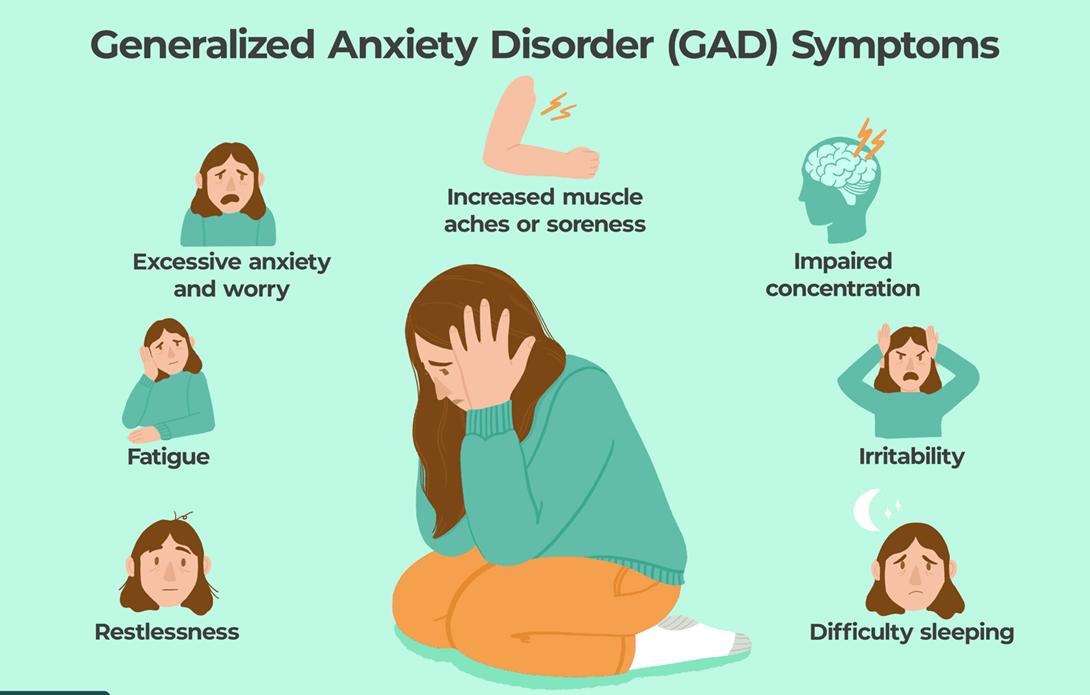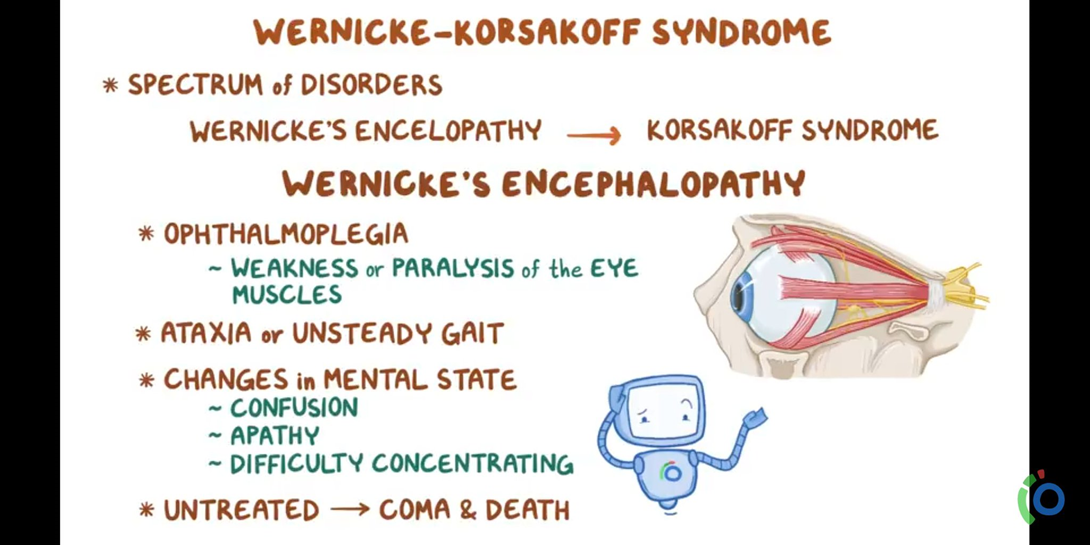A college student has been diagnosed with Generalized Anxiety Disorder (GAD). Which of the following symptoms should a campus nurse expect this client to exhibit? Select all that apply.
Hyperventilation
Irritability
Anorexia
Insomnia
Fatigue
Correct Answer : A,B,D,E
Choice A: Hyperventilation
Hyperventilation is rapid breathing that usually occurs because of anxiety or panic. This leads to low levels of carbon dioxide in your blood which causes a number of symptoms. Hyperventilation in anxiety can be a tricky thing to understand. On one hand, it can feel like you're suffocating or not getting enough air. On the other hand, hyperventilation can also cause shortness of breath, chest pain, and lightheadedness.
Choice B: Irritability
Irritability is a common symptom of Generalized Anxiety Disorder (GAD). Individuals with GAD often experience severe feelings of fear and unease and report feeling restless and irritable that interfere with the quality of their life.

Choice C: Anorexia
While there is a relationship between anxiety disorders and anorexia nervosa, anorexia is not a common symptom of Generalized Anxiety Disorder (GAD). Anorexia nervosa is a separate disorder that involves a fear of gaining weight and a distorted body image.
Choice D: Insomnia
Insomnia is highly prevalent in psychiatric disorders, and it has significant implications. The anxiety that characterizes GAD often interferes with the ability to sleep and leads to insomnia. This is not unexpected. Anxiety might be viewed as an inappropriate escalation of a response called arousal.
Choice E: Fatigue
Fatigue is a common symptom of Generalized Anxiety Disorder (GAD). Individuals with GAD may feel restless and have trouble relaxing. They may also tire easily or feel tired all the time.
Nursing Test Bank
Naxlex Comprehensive Predictor Exams
Related Questions
Correct Answer is D
Explanation
Choice A reason: This statement does not necessarily suggest a somatoform disorder, as it expresses hope for a medical diagnosis.
Choice B reason: Mentioning overexertion could be a logical explanation for pain and does not directly indicate a somatoform disorder.
Choice C reason: Expressing difficulty with life changes does not specifically suggest a somatoform disorder, which is characterized by physical symptoms without a medical cause.
Choice D reason: This statement suggests that the pain may be linked to psychological factors, such as stress from losing a job, which is characteristic of a somatoform disorder.
Correct Answer is A
Explanation
Choice A reason: Wernicke-Korsakoff syndrome is a brain and memory disorder that requires immediate treatment. It occurs due to a severe deficiency of thiamine (vitamin B1), which is essential for the brain to convert food into energy.

Choice B reason: There is no evidence suggesting that Wernicke-Korsakoff syndrome is a psychological condition related to stress.
Choice C reason: Wernicke-Korsakoff syndrome is not a genetic disorder; it is caused by a deficiency of vitamin B1, often associated with alcohol abuse or malnutrition.
Choice D reason: It is not an infectious disease; Wernicke-Korsakoff syndrome results from nutritional deficiencies, specifically a lack of thiamine (vitamin B1).
Whether you are a student looking to ace your exams or a practicing nurse seeking to enhance your expertise , our nursing education contents will empower you with the confidence and competence to make a difference in the lives of patients and become a respected leader in the healthcare field.
Visit Naxlex, invest in your future and unlock endless possibilities with our unparalleled nursing education contents today
Report Wrong Answer on the Current Question
Do you disagree with the answer? If yes, what is your expected answer? Explain.
Kindly be descriptive with the issue you are facing.
